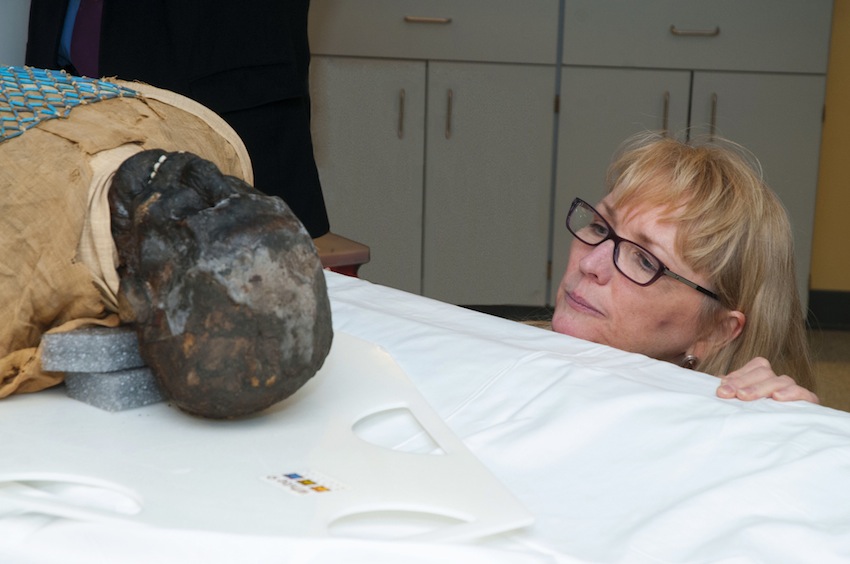Public Invited to Watch Restoration of 2,500 Year-Old Mummy at MGH
One of Massachusetts General Hospital’s oldest patients is getting some work done on his face on Friday, and the public is invited to watch it all go down.
Padihershef, a 2,500-year-old mummy that resides at the hospital as part of a display, will undergo a cleaning procedure to repair and restore parts of his face. The procedure will be conducted by trained conservators skilled in fixing up ancient artifacts, according to MGH. “His face is unwrapped, and the salt deposits from preservation process that was done on him [more than 2,000 years ago], has caused those deposits to leach out and form little patches on his face and create white stains,” says Michelle Marcella, a spokesperson for MGH. “They all have to be removed, and some linens have to be changed as well.”
The hospital’s Ether Dome will be open from 11 a.m. until 3 p.m. on Friday as the conservators handle the patch work. The Ether Dome is a teaching amphitheater and historical landmark at the hospital where visitors can look at various artifacts, including an oil painting of the famous first public surgery that happened there in 1846.
Padihershef will be put back on display in a custom-made, horizontal case next to another exhibit in the dome. “Since we are moving him, we will restore him at the same time,” says Marcella.
The mummy has been at the Ether Dome for more than a century. According to MGH officials, Padihershef was a gift from the city of Boston in 1823 as a “medical oddity.” When he was alive 2,500 years ago, he was a stonecutter from the Necropolis in Thebes.
Through an ongoing conservation project, under the direction of the Paul S. Russell, MD Museum of History and Innovation, the hospital has been giving the mummy X-rays to learn more about his life, and find out what he looked like by assembling more than 20,000 “sliced scans” and creating a 3-D representation, according to hospital staff.



